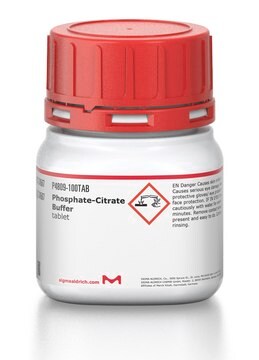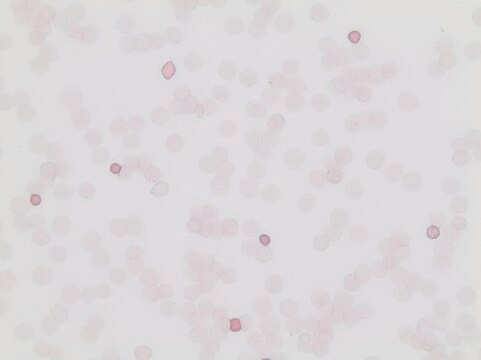C9999
Citrate Buffer, pH 6.0, 10×, Antigen Retriever
for immunohistochemistry
Synonyme(s) :
1,2,3-Propanetricarboxylic acid, 2-hydroxy-, mixt. with sodium hydroxide (Na(OH)) and sodium 2-hydroxy-1,2,3-propanetricarboxylate
About This Item
Produits recommandés
Application
Notes préparatoires
Stockage et stabilité
Autres remarques
Store the prepared 1′ Citrate buffer, pH 6.0, Working Solution at 2–8 °C.
Produit(s) apparenté(s)
Mention d'avertissement
Warning
Mentions de danger
Conseils de prudence
Classification des risques
Aquatic Chronic 3 - Skin Sens. 1
Code de la classe de stockage
12 - Non Combustible Liquids
Classe de danger pour l'eau (WGK)
WGK 2
Point d'éclair (°F)
Not applicable
Point d'éclair (°C)
Not applicable
Certificats d'analyse (COA)
Recherchez un Certificats d'analyse (COA) en saisissant le numéro de lot du produit. Les numéros de lot figurent sur l'étiquette du produit après les mots "Lot" ou "Batch".
Déjà en possession de ce produit ?
Retrouvez la documentation relative aux produits que vous avez récemment achetés dans la Bibliothèque de documents.
Les clients ont également consulté
Notre équipe de scientifiques dispose d'une expérience dans tous les secteurs de la recherche, notamment en sciences de la vie, science des matériaux, synthèse chimique, chromatographie, analyse et dans de nombreux autres domaines..
Contacter notre Service technique










